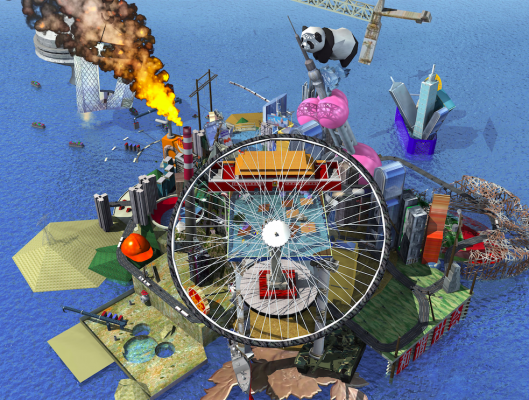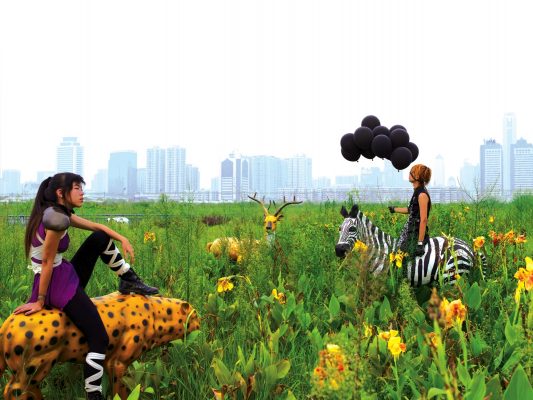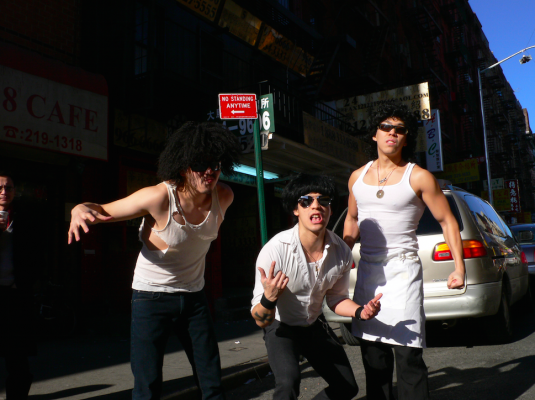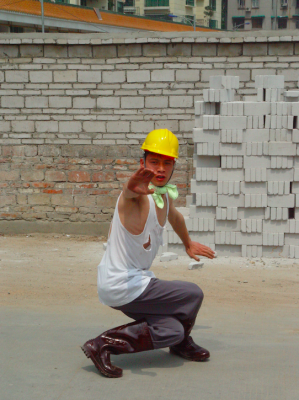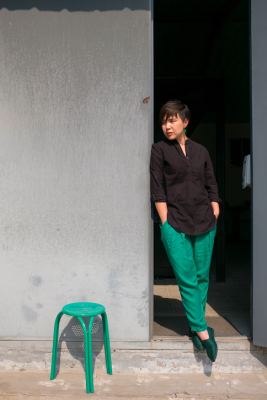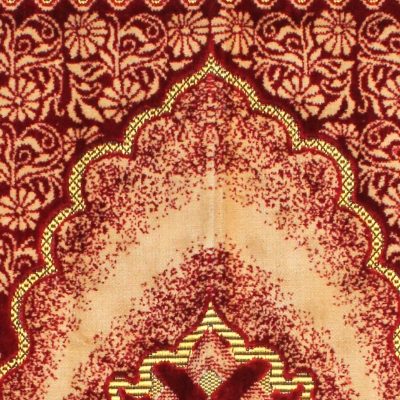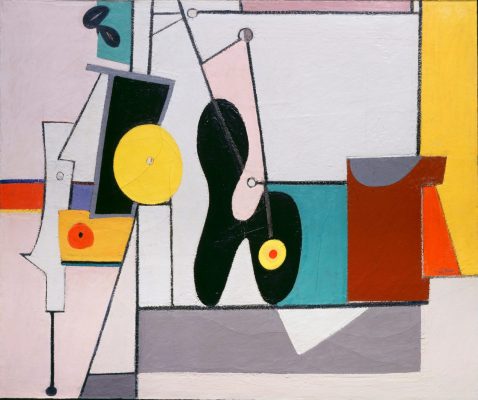The Chinese artist Cao Fei documents life in her country’s rapidly changing urban and social landscapes. Her eclectic work as an artist – which extends to video, photography, digital animation, and writing – twins the physical and material changes driven by industrialisation with the increasing immersion of China’s youth in digital networks and virtual environments.
Her early work explored these preoccupations – the video ‘COSPlayers’ (2004), released when she was 25 years old, follows adolescents as they dress up as animé characters and skirt the edgelands of Guangzhou, the sprawling port city of Fei’s birth; in ‘Whose Utopia?’ (2006, presented at the Tate Modern in 2014/15), workers at a manufacturing plant act out their fantasy lives amid the machines. She came to wider international prominence for her construction of a virtual Gotham toontown called RMB City (2006–2011) on Second Life, the online world in which it is possible to buy property, get married, and set up businesses through a digital alias.
Fei operated in Second Life through the avatar China Tracey. In ‘i.Mirror’ (2007), Tracey meets Hug Yue, a hunky blonde in white-tie, and together they rove the virtual landscape on a safari romance, musing on the spliced world they encounter. RMB City is an island conurbation comprised of a heap of souvenirs and stock images – as if burped out of a factory production line – which Fei describes as a ‘condensed incarnation of contemporary Chinese cities’ complete with chimneystacks, statues of Mao, shipping containers and shopping malls. Fei has documented the city in a wide range of mediums, from videos and virtual guides to a theatrical production on Second Life (‘RMB City Opera’, 2009).
Fei has exhibited widely, including at the Venice Biennale (2003, 2007, 2015), Deutsche Guggenheim (2006), and Serpentine Gallery, London (2008). Her work has been shown at, among others, Tate Modern, London; the Guggenheim Museum, the International Center of Photography and MoMA, New York; and at the Centre Pompidou and Palais de Tokyo, Paris. Her first museum solo show in the US opened at MoMA PS1 this April (and runs to 31 August).
We meet amidst the palatial architecture of Somerset House in London. Fei has short, cropped hair and a startlingly pink lipstick; when her phone buzzes, emojis shower across her screen. Now and again, she turns to an aide shadowing a wall nearby, who leans in to translate a word Fei can’t find in English. While many critics have sought to read Fei’s work as a critical mediation on Chinese citizenship – the dual despair and excitement of life in thriving industrial metropolises, and the necessary refuge taken in virtual realms – Fei offers an upbeat attitude towards her work, characterised by a will to document but not to pull apart. It’s fun, she insists gleefully, it’s all play.
